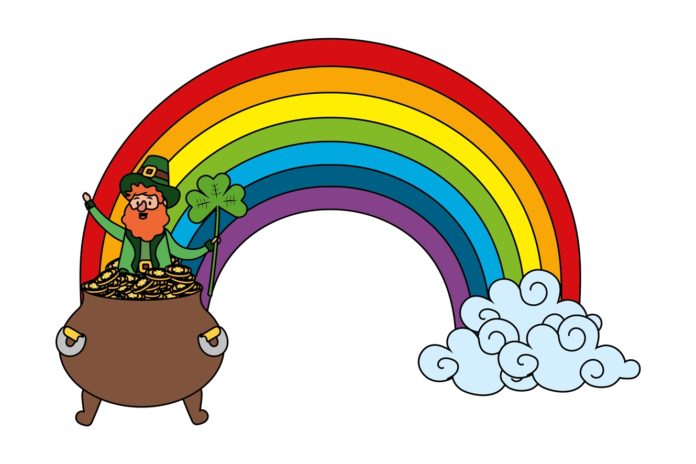Mythological folklore is one of the few things that I feel qualified to talk about. As a long-time fantasy fiction nerd, I’ve got a comprehensive mythical creatures compendium stored in the back of my brain, and with St. Patrick’s Day being this month, let’s talk leprechauns. Admittedly, I knew little about them off the top of my head—just the typical green jackets, pot of gold at the end of the rainbow, Limerick-area English dialect. But now I know more, and I’m going to teach you a thing or two about this well-beloved Irish creature.
The word leprechaun is thought to come from a combination of Old Irish for “small” and “body”. In Irish folklore, they are one of the aos sí—a race of fae folk that live invisibly among humans. They’re conceptually similar to two other Irish fae: the fear dearg and clurichaun.
Until around the 20th century, leprechauns were understood to wear red coats. Their appearances and clothes varied within the region of Ireland they were found. Various descriptions of them by authors and writers suggest that they wore relatively up-to-date clothes, including square-cut coats and cocked hats, with shoes and buckles. Which, at the time of most of those descriptions’ writings, would have only been a couple generations out of date. One of the common trends unifying all the descriptions is that of gold buttons and buckles, pointed hats, and shiny shoes. Physically they’re described as short, rounded in body shape, and nimble.
There has been absolutely no record of female leprechauns—neither mentioned in passing or appearing in any tales. How they are able to reproduce is somewhat of a mystery, though some hold that leprechauns are the fae folk’s deformed children who have taken on their own classification.
Leprechauns are cobblers by trade, but the gold fortunes they possess are said to be from coins buried in war-times. They bury their treasure wherever rainbows touch the ground—and given that rainbows don’t touch the ground and constantly move, leprechaun treasure seems safe from human discovery!
But leprechauns, despite their jolly appearances, tend to have a sinister streak to them. They are often mischief-makers. One of the earliest known stories featuring them tells of King Fergus mac Léti, who fell asleep on a beach. He woke up when splashed by icy seawater as three leprechauns dragged him into the sea. Fergus was able to overcome and capture the three leprechauns. In exchange for their release, each one of them granted him a wish. One of the things he wished for was to be able to breathe under water; he was granted this ability in all bodies of water except Loch Rudraige (because fairy logic). This is likely where the idea that catching a leprechaun will grant you three wishes comes from.
Now you know a little more about the mythological origins of leprechauns. So, this St. Patrick’s Day, why not pin a shamrock to your red coat, and partake in some Irish appreciation? As the Irish saying goes: may your glass be ever full, may the roof over your head be always strong, and may you be in heaven half an hour before the devil knows you’re dead! Happy St. Patrick’s Day!











